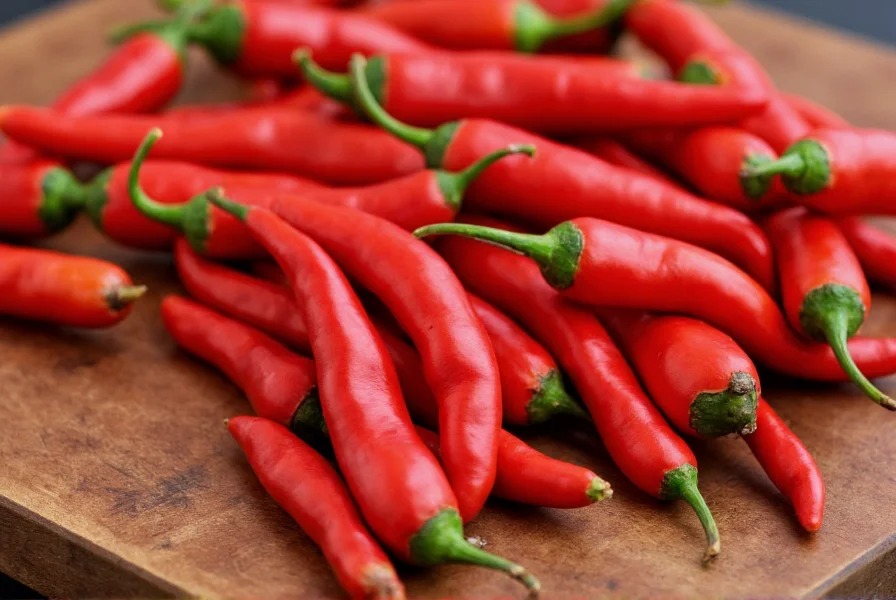When searching for how do you spell chili, you're likely encountering one of the most commonly misspelled food-related terms in English. This straightforward question has a clear answer with some important regional nuances that affect proper usage.
Understanding the Primary Spelling: Chili
In American English, chili (pronounced "chill-ee") represents the standard spelling for both the pepper and the stew-like dish containing these peppers. This spelling dominates across the United States in cookbooks, restaurant menus, and grocery store labels. When writing how to spell chili pepper for American audiences, this single-i version remains the preferred choice.
Regional Spelling Variations Explained
The confusion around chili vs chilli spelling stems from regional language differences:
| Spelling | Primary Usage | Geographic Prevalence |
|---|---|---|
| chili | Pepper and dish | United States (most common) |
| chilli | Pepper | United Kingdom, Commonwealth countries |
| chile | Country name, fresh pepper | Spanish-speaking regions, Southwestern US |
When to Use Each Spelling
Understanding why is chili spelled different ways helps determine proper usage in your writing:
Use "chili" when:
- Referring to chili con carne or other meat-based dishes
- Writing for American audiences
- Discussing dried peppers or powder
- Following Associated Press (AP) style guidelines
Use "chilli" when:
- Writing for British or Commonwealth audiences
- Following Oxford spelling conventions
- Referring specifically to the fresh pepper in UK contexts
Use "chile" when:
- Referring to the country Chile
- Discussing fresh peppers in Southwestern US or Mexican contexts
- Following Spanish transliteration standards

Common Mistakes to Avoid
Many writers struggle with is it chili or chilli in different contexts. Here are frequent errors:
- Mixing spellings within the same document - Choose one convention and maintain consistency
- Using "chile" for the dish - While acceptable for the pepper in some regions, "chile" rarely works for the meat stew
- Adding unnecessary letters - "chillie" or "chilly" are incorrect spellings for the pepper or dish
Linguistic Background
The word originates from the Nahuatl (Aztec) word "chīlli," referring to various peppers. Spanish colonizers adopted it as "chile," which then entered English with multiple spelling adaptations. The double-L version emerged through British English conventions, while American English simplified it to a single L.
When determining proper spelling for chili con carne, American English resources consistently use "chili" - as seen in the official spelling of the annual chili cook-off championships and major recipe publications.
Practical Application
Consider these real-world examples to clarify spelling of chili in American English:
- "I ordered a bowl of chili with extra beans at the Texas diner." (Correct - American dish)
- "The recipe calls for three dried chili peppers." (Correct - American English)
- "We visited Chile and tried fresh chile peppers." (Correct - country name and fresh pepper)
- "The British chef prepared a spicy chilli curry." (Correct - UK spelling convention)
Style Guide Recommendations
Major style guides provide clear direction for correct spelling of chili:
- Associated Press (AP) Stylebook: Prefers "chili" for the dish and the pepper in American contexts
- Chicago Manual of Style: Accepts both "chili" and "chile" but recommends consistency within documents
- Oxford Style Guide: Recommends "chilli" for British publications
For academic or professional writing, always check your organization's style guide first. When in doubt about how do you spell chili for general American audiences, "chili" remains the safest choice.
Frequently Asked Questions
Is "chili" or "chilli" the correct spelling?
Both are correct depending on regional usage. "Chili" is standard in American English, while "chilli" is preferred in British English. Neither is technically wrong, but consistency with your audience's conventions matters most.
Why does chili have different spellings?
The spelling variations stem from the word's journey from Nahuatl (chīlli) to Spanish (chile) to English. American English simplified it to "chili," British English added a second L (chilli), and "chile" persists in Spanish-influenced regions and when referring to the country.
Should I use 'chile' when referring to the country?
Yes, the South American country is always spelled 'Chile' regardless of regional English variations. This spelling distinction helps avoid confusion between the country and the pepper/dish.
Does the spelling change when referring to chili powder?
No, the spelling remains consistent. In American English, it's 'chili powder' regardless of whether you're referring to the ground spice or the dish. The same regional spelling rules apply to all forms of the word.
How do I know which spelling to use in formal writing?
Check your organization's style guide first. If none exists, use 'chili' for American audiences and 'chilli' for British/Commonwealth audiences. For academic writing, follow the relevant style manual (APA, MLA, Chicago, etc.). Always maintain consistency throughout your document.











 浙公网安备
33010002000092号
浙公网安备
33010002000092号 浙B2-20120091-4
浙B2-20120091-4